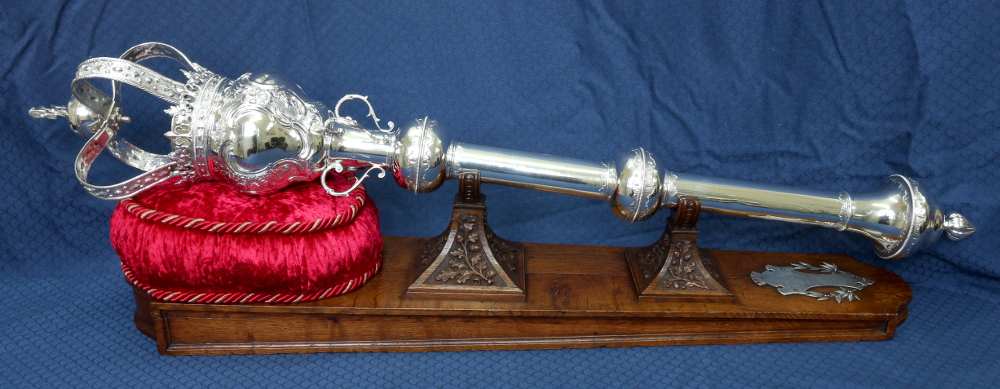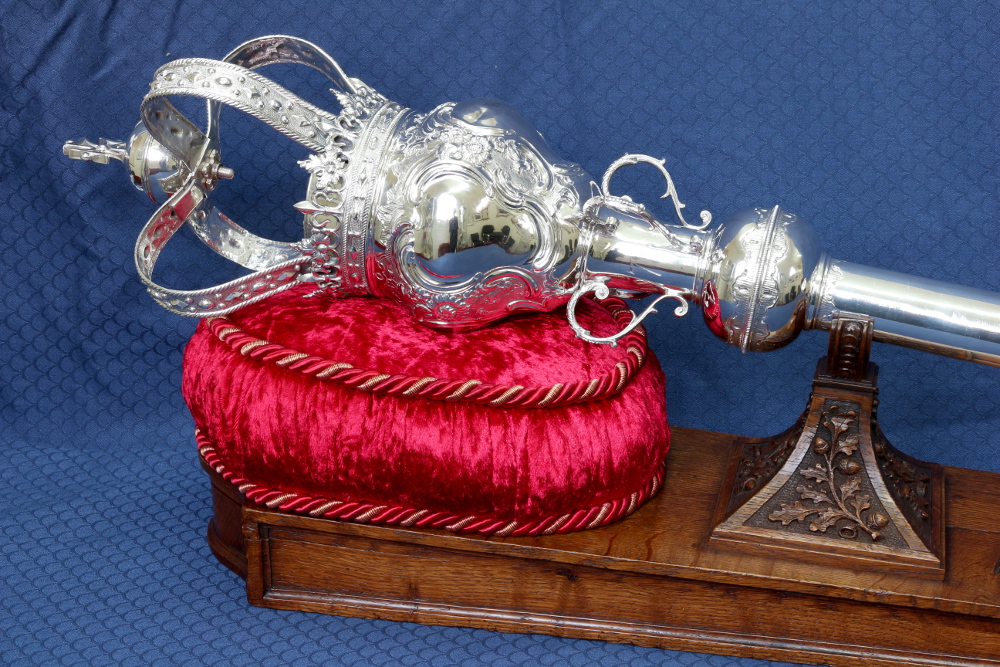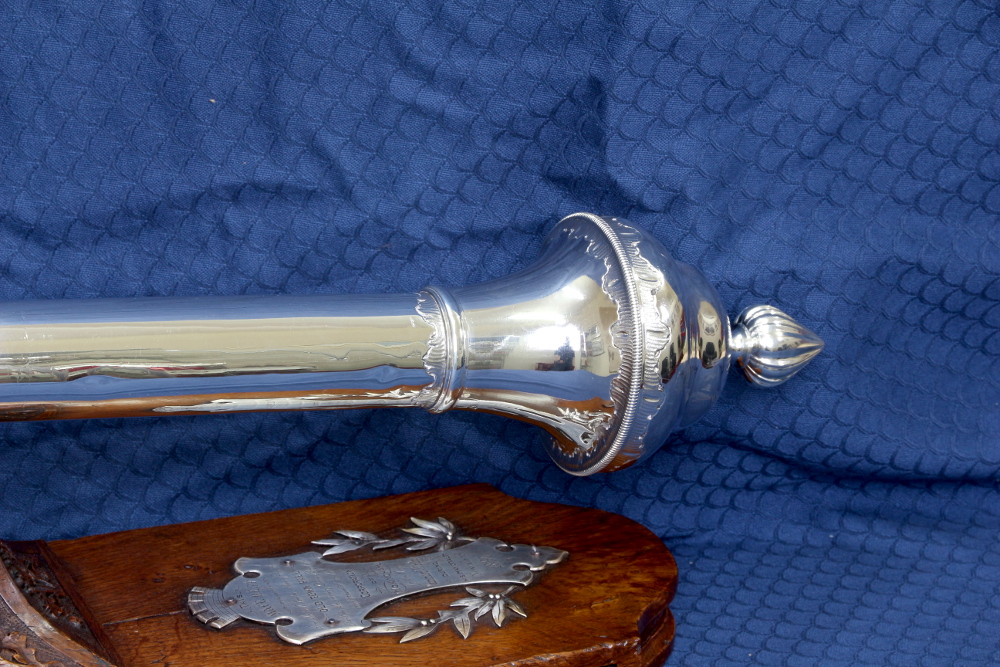An antique silver Mace; a two knopped baluster shaft with acorn shaped end knop, the knops chased with waved decoration, the shaft surmounted by four scroll brackets supporting a large baluster knop incorporating four plain rococo cartouches within chased floral and leaf and scroll matt surround, surmounted by a four arched openwork crown with orb terminal, the centre of the crown applied with the royal seal of George II in medallion form, the Mace inscribed “1758”
Weight (excluding stand) – 85 troy ounces
Hallmarked – London 1757
The Mace is the symbol of the Royal authority delegated to the Mayor, and therefore plays an important part in full Council proceedings.
It is normally borne on the right shoulder in an almost upright position (this may differ in some Councils). The Mace always precedes the Mayor on all appropriate occasions, such as official Council processions, and no person is allowed to intervene between the Mace and the Mayor.
The Mace always precedes the Mayor into the Council Chamber and is placed on the Council table with the crown end facing to the Mayor’s right. This is always the position if the Mace is at “Rest” unless the Mayor is seated in the Choir of a Church, then the Crown end of the Mace should be towards the Altar or in the upright position.
The Mace is reversed only in the presence of the Sovereign. It is the symbol of the Royal authority and is thus redundant in the Presence.
If the Council at which the Mayor is presiding resolves itself into a Committee, then the Mace is removed or hidden from sight until full Council is resumed.
It is not necessary for the Mace to be draped for mourning but if it should be the Mayor’s wish, a convenient method is to tie black bows to the Crown for national mourning and on the brackets for local mourning.
History of the Mace from a book complied by Albert Dunham
The Mace of today originated from a wooden club which was without doubt the most primitive of all weapons produced by man. It is shown being used as such in the Bayeaux Tapestry; and also was the only weapon that Ecclesiastics were allowed to wield in their defence in battle.
As the strength of body armour increased, so the wooden clubs were modified with metal studs and iron bands being fitted to the head and the complete item being fashioned from iron and steel alone. It was about two feet in length and by the eleventh and twelfth centuries had developed into a stylized weapon of a formidable nature and this was the direct ancestor of our Ceremonial Mace.
The bell end became adorned with Coats of Arms, Crest and other embellishments becoming larger whilst the head became a smaller grooved knob until finally disappeared into a small button.
The next step in the Mace’s evolution was the addition of a cresting or coronet rim surrounding the Royal Arms.
Thus the original base of the Mace, honoured by its adornment of these Arms surrounded by a coronet, became to be regarded as the more important end and in consequence of this a reversal of the Mace occurred from thenceforth it was carried with the crested end uppermost.
The Mace ceased to be considered as a weapon of War during the reign of Queen Elizabeth I and with the addition of further embellishments and some being made wholly from precious metals, it ceased to be considered a weapon of offence and became a symbol of Authority solely.
The pattern of the Mace most commonly seen today was standardised by Royal Decree of King Charles I. This was confirmed under the Commonwealth (but without the Royal emblems, the Orb and Cross being replaced by an Acorn), but the original pattern was restored under King Charles II.
The bell end attained still higher honour for now the coronet expanded into a full size noble Crown with important arches surmounted by an Orb and Cross, and the whole weapon swelled to proportions to be wielded to strike, and thus by the end of the Tudor dynasty our Ceremonial Mace was fully fledged.
Wokingham Town Museum Unique Identifier: WTH0034



